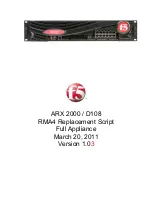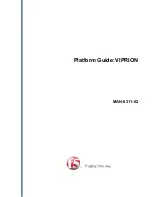
1-18
Cisco ASA Series CLI Configuration Guide
Chapter 1 Configuring the ASA to Integrate with Cisco TrustSec
Configuring the ASA for Cisco TrustSec Integration
To add an SXP connection peer, perform the following steps:
Command
Purpose
Step 1
hostname(config)#
cts sxp enable
If necessary, enables SXP on the ASA. By default,
SXP is disabled.
Step 2
hostname(config)#
cts
sxp
connection
peer
peer_ip_address
[
source
source_ip_address
]
password
{
default
|
none
} [
mode
{
local
|
peer
}]
{
speaker
|
listener
}
Example:
hostname(config)# cts sxp connection peer
192.168.1.100 password default mode peer speaker
Sets up an SXP connection to an SXP peer. SXP
connections are set per IP address; a single device
pair can service multiple SXP connections.
Peer IP Address (Required)
Where
peer_ip_address
is the IPv4 or IPv6 address
of the SXP peer. The peer IP address must be
reachable from the ASA outgoing interface.
Source IP Address (Optional)
Where
source_ip_address
is the local IPv4 or IPv6
address of the SXP connection. The source IP
address must be the same as the ASA outbound
interface or the connection will fail.
We recommend that you do not configure a source IP
address for an SXP connection and allow the ASA to
perform a route/ARP lookup to determine the source
IP address for the SXP connection.
Password (Required)
Specifies whether to use the authentication key for
the SXP connection:
•
default
—Use the default password configured
for SXP connections. See
Security Exchange Protocol (SXP), page 1-14
.
•
none
—Do not use a password for the SXP
connection.
Mode (Optional)
Specifies the mode of the SXP connection:
•
local
—Use the local SXP device.
•
peer
—Use the peer SXP device.
Role (Required)
Specifies whether the ASA functions as a Speaker or
Listener for the SXP connection. See
and Listener Roles on the ASA, page 1-5
•
speaker
—ASA can forward IP-SGT mappings
to upstream devices.
•
listener
—ASA can receive IP-SGT mappings
from downstream devices.
Summary of Contents for 5505 - ASA Firewall Edition Bundle
Page 28: ...Glossary GL 24 Cisco ASA Series CLI Configuration Guide ...
Page 61: ...P A R T 1 Getting Started with the ASA ...
Page 62: ......
Page 219: ...P A R T 2 Configuring High Availability and Scalability ...
Page 220: ......
Page 403: ...P A R T 2 Configuring Interfaces ...
Page 404: ......
Page 499: ...P A R T 2 Configuring Basic Settings ...
Page 500: ......
Page 533: ...P A R T 2 Configuring Objects and Access Lists ...
Page 534: ......
Page 601: ...P A R T 2 Configuring IP Routing ...
Page 602: ......
Page 745: ...P A R T 2 Configuring Network Address Translation ...
Page 746: ......
Page 845: ...P A R T 2 Configuring AAA Servers and the Local Database ...
Page 846: ......
Page 981: ...P A R T 2 Configuring Access Control ...
Page 982: ......
Page 1061: ...P A R T 2 Configuring Service Policies Using the Modular Policy Framework ...
Page 1062: ......
Page 1093: ...P A R T 2 Configuring Application Inspection ...
Page 1094: ......
Page 1191: ...P A R T 2 Configuring Unified Communications ...
Page 1192: ......
Page 1333: ...P A R T 2 Configuring Connection Settings and QoS ...
Page 1334: ......
Page 1379: ...P A R T 2 Configuring Advanced Network Protection ...
Page 1380: ......
Page 1475: ...P A R T 2 Configuring Modules ...
Page 1476: ......
Page 1549: ...P A R T 2 Configuring VPN ...
Page 1550: ......
Page 1965: ...P A R T 2 Configuring Logging SNMP and Smart Call Home ...
Page 1966: ......
Page 2059: ...P A R T 2 System Administration ...
Page 2060: ......
Page 2098: ...1 8 Cisco ASA Series CLI Configuration Guide Chapter 1 Troubleshooting Viewing the Coredump ...
Page 2099: ...P A R T 2 Reference ...
Page 2100: ......






































